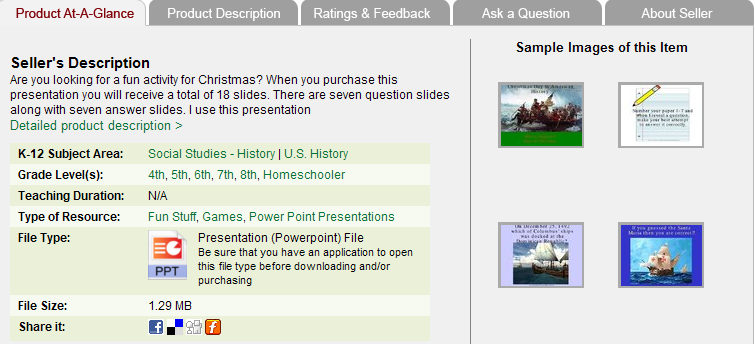E-learning concepts - Table of Content
E-learning
standards
 Learning Objectives
Learning Objectives
When you have completed this session, you should be able to
- discuss the importance of e-learning standards,
- define concept of “learning object”,
- use Learning Objects (LOs) in your pedagogical practice,
- define and use the concept of “metadata” in e-learning.
Industrial standards are used to determine products used in all parts of our life – from a simple bathroom faucet all the way to complex computer networks. These standards allow us to know how to implement and use products; they also define how they can interoperate. So a bathroom faucet will have to connect to a plumbing system, and a computer workstation will have to connect to a digital data network.
Obviously, the extensive application of digital formats would not be possible without world-wide conventions – standards. Electronic courses are made up from of digitally stored assets such as audio, video, picture and animation data – which should all be held in a standard format.
There are a multitude of possible data structures for such data assets. Designers and developers have to follow international standards and protocols to ensure valid and compliant computerized environments.
Standards in e-learning
One of the general purposes of standardizations is the saving of resource. The same is true in case of e-learning. One of the central issues of e-learning standards is based on the concept of “learning object”.
A learning object is a resource, usually digital and web-based, that can be used and re-used to support learning. (en.wikipedia.org/wiki/Learning_object accessed 01/04/2010.)
There are advantages to dividing digital content into elemental parts (concepts, exercises, illustrations, etc.), to identifying the units unambiguously (as books are in library catalogues) and to storing them in digital databases with their descriptive attributes, such as:
- Enabling browsing or searching at any time,
- Supporting reuse for other lessons, creating customized lessons to meet different needs
- Utilizing the elements in different environments or frameworks.
Learning Objects
|
The concept of “learning object” - developed as a result of methodological researches - has a prominent role in the e-learning terminology. Learning Object (LO) – in terms of methodology and didactics is the basic unit of lessons which cannot be further divided. It can be handled individually and has its individual meaning. Occasionally it can be utilized in more subjects for more topics (and can be resembled mostly as an entry of a digital lexicon). Examples: graphics, pictures, animations, video clips, exams, definitions, concept definitions, exercises, formulas, etc. The development of this concept was encouraged by three basic needs:
|
Learning Object Metadata – LOM
One does not need a lot of experience in the world of digital assets in order to understand that computers cannot search the contents of a picture or digitized voice.
If a digitally stored picture has to be found on the Internet some description of its contents must be given. When you are searching for a painting in a database, you have chance to be successful only if the name of the artist, the title of the painting or the date of painting, etc. are stored together with the digitalized version of the painting. The "title of the painting" and the "name of the artist" are examples of metadata – data about the data.
E-learning solutions use the idea of "learning object metadata". This approach fulfills (or may fulfill) the following requirements:
- Reusability – LOs developed for one situation, together with descriptive metadata, can be stored in one database. Such LOs can be discovered later and reused in another situation. Thus we can reuse LOs for the benefit of new lessons.
- Flexibility – with the help of Los, suitable lessons can be created for a given target group.
- Uniformity – when creating LOs, standards have to be applied in order to be able to organize them in a simple way for many e-learning platforms.
- Simple refreshing – when needed; old, out-dated objects can be simply changed without rewriting the whole lesson.
- Economy –reusability reduces the costs of producing learning content.

In the picture, above, you see metadata for a learning object published by a teacher in an on-line repository – used in the US as a market place where teachers can share their works with each-other. On this site teachers from all over the world offer their assets, as well as their tools, and even complete lessons. There is opportunity for selecting, evaluating, and downloading digital content free or for money.
Standard Organizations
Aviation Industry CBT Committee (AICC)
 AICC (see on Wikipedia) is an organization for companies applying computer supported educational methods. It was established in 1998. It develops recommendations and standards to the development and mediation of computer based education packages. Standards are not exclusively used in aviation industry but worldwide in other industries too. AICC has become a de jure standard.
AICC (see on Wikipedia) is an organization for companies applying computer supported educational methods. It was established in 1998. It develops recommendations and standards to the development and mediation of computer based education packages. Standards are not exclusively used in aviation industry but worldwide in other industries too. AICC has become a de jure standard.
Instructional Management Systems (IMS)
 The IMS is an Association which supports the development of standards, innovation, best practice and recognition of superior learning impact, in the field of e-learning.
The IMS is an Association which supports the development of standards, innovation, best practice and recognition of superior learning impact, in the field of e-learning.
This standard has been established and maintained by IMS Global Learning Consortium – an international nonprofit organization, whereto anyone can join freely (www.imsglobal.org/aboutims.html). The IMS standard is mostly used on the following areas:
- tests, examinations,
- content management,
- metadata,
- student information,
- company information (learning methodology, access regulation, etc.).
IEEE Learning Technology Standards Committee (LTSC)
The Institute of Electrical and Electronics Engineers is a non-profit alliance with several thousand members being active mainly in different technical fields. Among many other things it is also being the developer major standards of computer network communication. Its professional committee specialized on e-learning systems called IEEE LTSC (Learning Technology Standards Committee - http://www.ieeeltsc.org/about/), with 20 work teams. The committee designated the following areas of e-learning framework systems for standardization:
- General – structure, reference model, concept lexicon
- Student related services ( student identification, student profiles, evaluation of student activities)
- Content related services – storing, compressing, organizing, and maintaining syllabuses.
- Data and metadata – storage structure, systematization, etc.
- Complementary applications –software environments
 Advanced Distributed Learning
Advanced Distributed Learning
The ADL (Advanced Distributed Learning) organization was established by the United States Ministry of Defense and the White House Office of Science and Technology Policy in 1997 (https://www.adlnet.gov/about-adl/).
Sharable Content Object Reference Model - SCORM
![]() According to ADL their target was to provide the highest level of electronic education, that could truly served the custom needs of clients. The SCORM standard was prepared with the aim of being the structural model for web based content, and it tries to unify the results of the IEEE LTSC and IMS standards, concentrating on the criteria of reusability.
According to ADL their target was to provide the highest level of electronic education, that could truly served the custom needs of clients. The SCORM standard was prepared with the aim of being the structural model for web based content, and it tries to unify the results of the IEEE LTSC and IMS standards, concentrating on the criteria of reusability.
The Standards Process
As the eLearning market grows, the quantity of learning materials available online has soared. So too has the number of tools for content creation, content delivery and applications for content management. Common standards for metadata, learning objects, and learning architecture are mandatory to ensure success of the eLearning. Fortunately, the work to create such standards for learning objects and related standards has been going on around the world for the past few years. This includes the creation of accredited standards from the IEEE Learning Technology Standards Committee (LTSC) for Learning Object Metadata, Computer Managed Instruction, Course Sequencing, Learner Profiles and much more.
The process of developing standards includes work form all of the organizations noted above, and can be shown in the diagram below:
All of these standards are built on the W3C XML standard (and hence the ISO SGML standard), which is the building blocks of the web itself. The HTML instance of XML shows the value of using standards, and many organizations believe that simply using XML itself is standard enough, i.e. using standards for content, not just its packaging or description.
 Exercises
Exercises
1. We have a common learning database in Moodle on the Tenegen home page. This icon takes you there: ![]()
Visit this database and check what kind of metadata is used for describing the different learning objects. Select one of your “learning objects” – it may be a digital photo, a test created in Word, an Excel sheet, anything you made as a helping tool for your earlier lessons – and load up this learning object with metadata. How? Look for help in the Help menu: Uploading LO into the Moodle database
2. Visit web page https://www.teacherspayteachers.com/. On this site teachers offer their educational tools and content from all over the world. There is an opportunity for selecting and evaluating downloaded digital contents free or for money. Take a look at their metadata and take a look at some lessons! You may also have some assets in your own databases? Why don’t you offer them for consideration? Write a few words about it in your learning diary.
References
1. IEEE P1484.1/D7, 2001-03-11; Draft Standard for Learning Technology — Learning Technology Systems Architecture (LTSA)